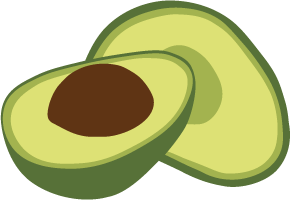ArangoDB v3.4 reached End of Life (EOL) and is no longer supported.
This documentation is outdated. Please see the most recent version here: Latest Docs
GraphVertexCollection API
The GraphVertexCollection API extends the Collection API with the following methods.
graphVertexCollection.remove
async graphVertexCollection.remove(documentHandle): Object
Deletes the vertex with the given documentHandle from the collection.
Arguments
-
documentHandle:
stringThe handle of the vertex to retrieve. This can be either the
_idor the_keyof a vertex in the collection, or a vertex (i.e. an object with an_idor_keyproperty).
Examples
const graph = db.graph("some-graph");
const collection = graph.vertexCollection("vertices");
await collection.remove("some-key");
// document 'vertices/some-key' no longer exists
// -- or --
await collection.remove("vertices/some-key");
// document 'vertices/some-key' no longer exists
graphVertexCollection.documentExists
async graphVertexCollection.documentExists(documentHandle): boolean
Checks whether the vertex with the given documentHandle exists.
Arguments
-
documentHandle:
stringThe handle of the vertex to retrieve. This can be either the
_idor the_keyof a vertex in the collection, or a vertex (i.e. an object with an_idor_keyproperty).
Examples
const graph = db.graph("some-graph");
const collection = graph.vertexCollection("vertices");
const exists = await collection.documentExists("some-key");
if (exists === false) {
// the vertex does not exist
}
graphVertexCollection.document
async graphVertexCollection.document(documentHandle, [graceful]): Object
Alias: graphVertexCollection.vertex.
Retrieves the vertex with the given documentHandle from the collection.
Arguments
-
documentHandle:
stringThe handle of the vertex to retrieve. This can be either the
_idor the_keyof a vertex in the collection, or a vertex (i.e. an object with an_idor_keyproperty). -
opts:
Object(optional)If opts is set, it must be an object with any of the following properties:
-
graceful:
boolean(Default:false)If set to
true, the method will returnnullinstead of throwing an error if the vertex does not exist. -
allowDirtyRead:
boolean(Default:false)This option is only available when targeting ArangoDB 3.4 or later, see Compatibility.
If set to
true, the request will explicitly permit ArangoDB to return a potentially dirty or stale result and arangojs will load balance the request without distinguishing between leaders and followers.
-
If a boolean is passed instead of an options object, it will be interpreted as the graceful option.
Examples
const graph = db.graph("some-graph");
const collection = graph.vertexCollection("vertices");
const doc = await collection.document("some-key");
// the vertex exists
assert.equal(doc._key, "some-key");
assert.equal(doc._id, "vertices/some-key");
// -- or --
const doc = await collection.document("vertices/some-key");
// the vertex exists
assert.equal(doc._key, "some-key");
assert.equal(doc._id, "vertices/some-key");
// -- or --
const doc = await collection.vertex("some-key", true);
if (doc === null) {
// the vertex does not exist
}
graphVertexCollection.save
async graphVertexCollection.save(data): Object
Creates a new vertex with the given data.
Arguments
-
data:
ObjectThe data of the vertex.
Examples
const db = new Database();
const graph = db.graph("some-graph");
const collection = graph.vertexCollection("vertices");
const doc = await collection.save({ some: "data" });
assert.equal(doc._id, "vertices/" + doc._key);
assert.equal(doc.some, "data");

